Tokyo is undoubtedly a bucket list destination for every traveler. Learn here 23 things to do and eat during a 4-day trip in this mega city!
DISCLAIMER: This page contains affiliate links, which means I will get a small commission, at no extra cost to you, if you make a purchase through it. If you decide to use my links, I would like to sincerely thank you for your support to my blog!
For quite a while, Tokyo has been on top of my bucket list, and I’m sure that it’s been on yours too.
Home to over 12 million people, covering an area of over 2,000 square kilometers, Tokyo is not only huge, it’s ginormous! There are so many things to do and so many things to eat.
Tokyo is so unique that there is no single word that can describe it well. It’s quirky, somewhat bizarre, but also startlingly cute and adorable.
It’s a city where you can see the beautiful harmony between modern and traditional, between tranquility and hectic chaos. Honestly, I never feel amazed and welcomed in a city than in Tokyo!
In this post, I would like to share with you 23 THINGS YOU SHOULD DO AND EAT from my short 4-day trip to Tokyo. Hopefully, this serves as an inspiration for your own future itinerary.
As always, I will also provide some HONEST tips and information to help you prepare for your trip, even before you arrive in Tokyo.
23 Things to Do and Eat in Tokyo, Japan: 4-day itinerary
Pre-arrival
To help you prepare your visit before you arrive in Tokyo, here are few essential things to keep in mind.
#1 – Get familiar with Tokyo metropolitan area
As said before, Tokyo is humongous. Tokyo metropolitan area contains 23 central wards, not including the suburbs and islands surrounding the city.
If you only visit Tokyo for a week or less, the best area I would recommend for you to stay and explore is the Central Tokyo, which consists of 8 wards in the heart of the city: Chiyoda, Chuo, Minato, Shinjuku, Shibuya, Shinagawa, Toshima, and Meguro. This is also the focus of the itinerary covered in this post.
#2 – Hotels or Airbnb?
Accommodation in Tokyo is generally quite expensive. Because the city is so dense and over-populated, the hotel room in Tokyo is also notoriously super tiny. As an example, a $100 a night hotel room at Ibis Shinjuku is only 8 square meters big and has just 1 single bed.
There are of course exceptions. One of them that I highly recommend is Hotel Gracery in Shinjuku. This hotel has one of the most spacious rooms in Tokyo with an extremely decent price.
Starting at around $150 a night, you can stay in a modern and spacious room with a king-size bed at one of the best locations in Central Tokyo.

Image courtesy of Hotel Gracery Shinjuku
If you choose Airbnb instead, there are plenty of good quality accommodations. However, don’t expect to get them as cheap as in other Asian cities, and the space you get is perhaps only marginally bigger than at a hotel.
Also, many of cheaper accommodations are likely to be located away from Central Tokyo, so have that in mind while making your choice.
To help you bring the cost down, don’t forget to use this link to get €30 off for your first Airbnb booking.
#3 – Currencies, payment, and tipping
Cash payment is still heavily used in Japan. A credit card is only limited in use.
In case you’d like to exchange some money before your departure, Japan’s currency is called Japanese Yen (JPY). As of now, the exchange rate of USD to JPY is around 109 JPY (1 USD = ~109 JPY).
As always, instead of exchanging money at home, I would suggest doing so in Japan upon your arrival, as you will tend to get a better rate.
Or you can also choose to withdraw money at the ATM. However, withdrawing money with foreign credit/debit cards is only possible at 2 ATM machines: (1) 7-Bank ATMs located at 7-Eleven convenience stores and at the airport; and (2) postal ATMs found mainly at the post offices.
Unlike in the US, tipping is absolutely not necessary in Japan and even can be considered as rude. In Japan, a good service is considered as part of the price you pay for. So when you tip, it can be interpreted that the level of service you expect was lower compared to what you actually get.
Upon arrival
If you fly to Tokyo, you will either arrive at Haneda International Airport (HND) or Narita International Airport (NRT)
Haneda Airport is located the closest to Central Tokyo, about 10 km to the south. On the other hand, Narita Airport is the farthest from the city, about 32 km to the west.
Unfortunately, ride-hailing service like Uber does not exist in Tokyo. So in order to get you from the airport, the only options available are the taxi and public transport.
Luckily, Japan has one of the best and affordable public transport systems in the world. So I would highly recommend taking public transport to get you from the airport.
But before boarding any public transport, I would highly recommend you to get yourself a public transport card, such as Suica or Pasmo card. These cards make it easy for you to transfer from one line to another. You can buy these cards at the ticket machine at any major stations and at the airport.
From Narita Airport, the fastest way to get you to the city is to take Narita Express to major stations in Central Tokyo, like Tokyo Station, Shinjuku or Shibuya. And from there you can take the JR metro lines to your final destination.
From Haneda airport, the best and fun way to get to the city is to take the monorail to Station Shinagawa, where you can transfer to JR Yamanote Line (Green Line) to reach your final destination in Central Tokyo.
Get My Quick FREE Travel Checklist!
Subscribe now to get my quick FREE Travel Checklist.
I will also send you latest updates on travel tips, food and other travel stories from around the world!
Itinerary and Food
Day 1 – Shinjuku
Things to do:
#1 – Kabukichō and Nishishinjuku, Shinjuku
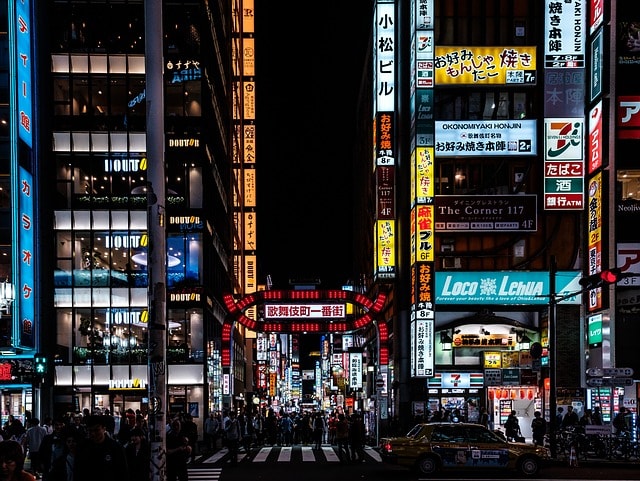
Let’s start to explore Tokyo from Shinjuku. Shinjuku is one of the major wards in Central Tokyo, and Shinjuku station is one of the busiest train and metro stations in Central Tokyo.
That means there are plenty of things to do, see and eat in Shinjuku. Stroll first around Kabukichō, the famous “red light district” area of Shinjuku. If you’re traveling with kids, don’t worry, it’s all PG-13 here.
In Kabukichō there are many shops, izakaya (bar/eating place in Japanese), karaoke, pachinko places and restaurants. The most famous and notorious one is, of course, the Robot Restaurant. If you’re interested to see the Robot show, you can purchase a ticket, which costs around $75.
Go head back to Shinjuku station and let’s now explore the area around the station called Nishishinjuku.
In the east side of the station, you can find Japan’s luxurious department store, Takashimaya, and a plethora of other shops and restaurants.
And in the west side, you can find the famous alleyway called Yakitori Alley Memory Lane (or Piss Alley), which contains a row of small izakayas serving yakitori.
A little warning: the izakayas in this alley are very tiny and not really friendly (see instead my recommendation for Yakitori place in Shinjuku below). And you have to pay 300 JPY “tourist levy” just to get a table.
Location: Kabukichō and Nishishinjuku, Shinjuku
#2 – Tokyo Metropolitan Government Building, Shinjuku
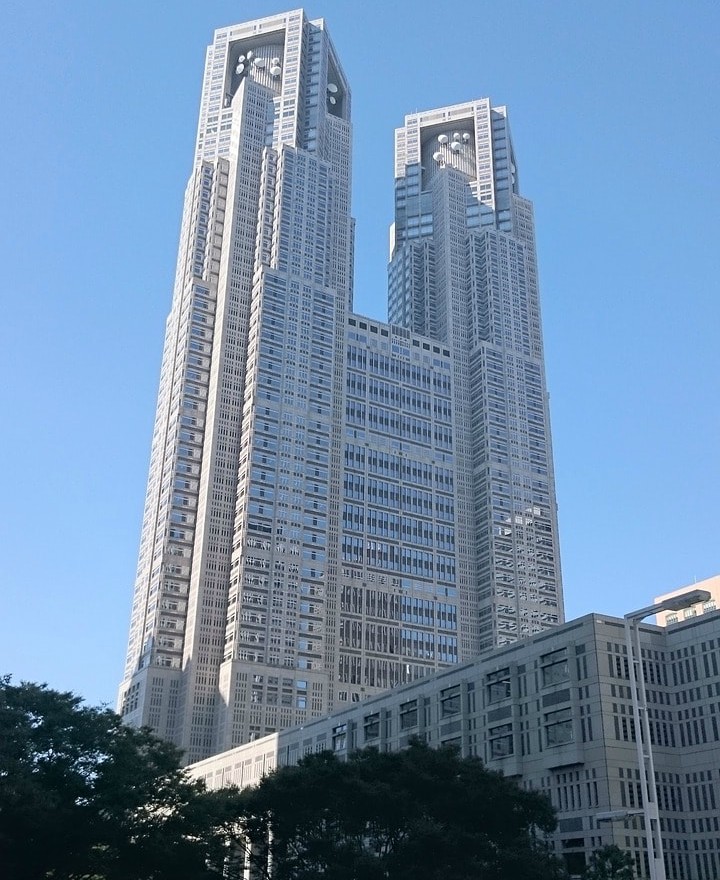
Continuing our day in Shinjuku, get the best 360-degree view of Tokyo for FREE from this building. In a clear sunny day, you can even see Mount Fuji from this building.
The Tokyo Metropolitan Government building has 2 observatory towers, the north and south towers. The north one is best to visit during the morning, while the south one during the afternoon. The building is just 10 minutes walk from Shibuya station.
Location: Tokyo Metropolitan Government Building, 2 Chome-8-1 Nishishinjuku, Shinjuku-ku, Tōkyō-to
Food:
#3 – Ichiran Ramen
Ichiran is hands down one of the best ramen places in Japan! It is one of the Japanese restaurant chains that have increasingly gained popularity even outside Japan.
Ichiran is famous for the unique anti-social concept of its restaurant. At Ichiran, there are no communal table seats. Instead, each customer sits individually separate from each other in a bar-like setting. And there is no waiter either, as ordering takes place via a vending machine and a form.
All of this aims to let you focus just to enjoy the ramen. And oh boy, it doesn’t disappoint (see video below, courtesy of Mikey Chen, my favorite foodie Youtuber)! A bowl of tonkotsu ramen, complete with a soft-boiled egg, costs around 1,500 JPY (~$14) at Ichiran, and it’s worth every penny!
Location: Ichiran Ramen Shinjuku, 160-0022 Tōkyō-to, Shinjuku-ku, Shinjuku, 3 Chome−34−11
#4 – Yakitori
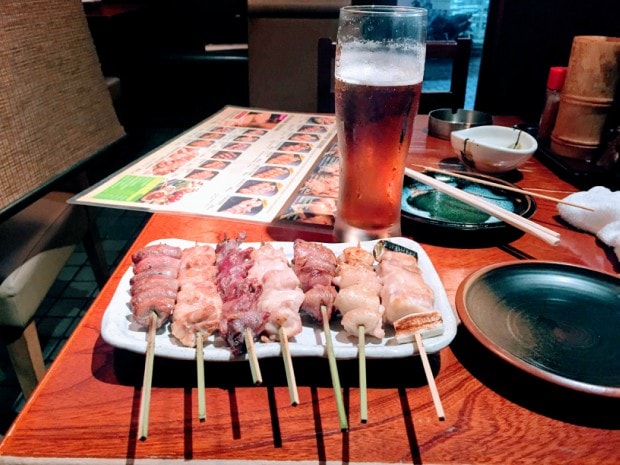
Another must-eat item in Tokyo is, of course, Japanese yakitori.
For those of you who are not familiar with yakitori, it is a skewered meat (mainly chicken and chicken parts), freshly grilled over charcoal. Its salty and smoky flavor makes it a perfect pair with a cold beer.
My personal favorite yakitori that I highly recommend to get is chicken skins, giblets, and hearts.
There are many izakayas to get yakitori in Shinjuku (including in Yakitori Alley Memory Lane in Shinjuku), but I highly recommend to go to Hajimeya in Kabukichō. The place is more spacious and the service is extremely friendly. Price starts at around 200 JPY (~$2) per stick.
Location: Hajimeya, 160-0021 Tōkyō-to, Shinjuku-ku, Kabukichō, 1 Chome−26
#5 – Tempura

Tempura is a 4-century long deep frying tradition in Japan, which started when oil was brought into Japan from Portugal. In fact, the word “tempura” is derived from the Portuguese word “tempero,” which means “to season”.
In Tokyo, there are many places specializing in perfecting the art of tempura, which results in less greasy and much tastier tempura.
One of them is Funabashiya Honten in Shinjuku, where the tempura master fries and serves the ingredients right in front of you. Here you can get a set of 9 mixed tempura (consists of shrimp, fish, and vegetables) for around 3,500 JPY (~$30).
Location: Funabashiya Honten, 160-0022 Tōkyō-to, Shinjuku-ku, Shinjuku, 3 Chome−31
Day 2 – Shibuya
Things to do:
#6 – Scramble Crossing and Hachiko Memorial Statue, Shibuya
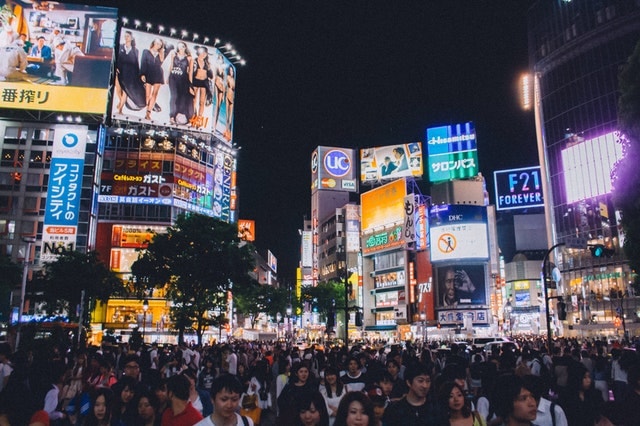
Let’s explore another major ward in Central Tokyo, Shibuya. Similar to Shinjuku, Shibuya is bustling with high-end shops, bars, and restaurants. It’s also a noticeably more popular area to hang out for the younger Japanese.
One of the most iconic things to do and see in Shibuya is the scramble crossing across the Shibuya station, near the Hachiko exit.
Hachiko itself is a legendary Akita dog, whose heartbreaking story has been adapted into a movie titled Hachi: A Dog’s Tale, starring famous actor Richard Gere. Every day thousands of people visit Hachiko Memorial Statue to pay tribute to this remarkable loyal dog.
Location: Shibuya Station, Hachiko exit, Shibuya-ku, Tōkyō-to
#7 – Yoyogi Park and Meiji Jingu Shrine, Yoyogi
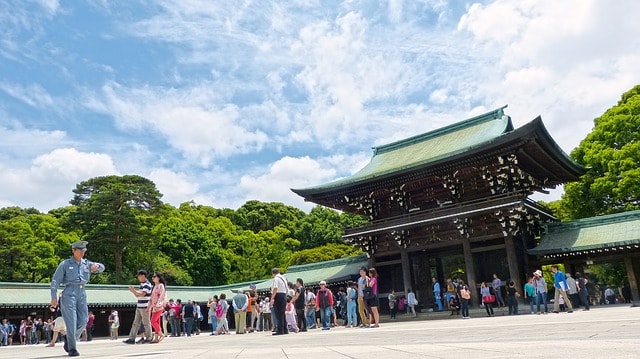
From Shibuya station, let’s head north to an area called Yoyogi. It is famous for the beautiful serene park called Yoyogi Park.
In the weekend you can see the locals doing numerous of outdoor activities, from jogging, meditation or just having a relaxing stroll with their families and pets.
In the heart of Yoyogi Park, you can find Meiji Jingu shrine. This esteemed Shinto shrine is dedicated to the deified spirits of Emperor Meiji and his wife, Empress Shoken.
You can reach Yoyogi Park with JR Yamanote metro line, and stops at Harajuku station.
Location: Yoyogi Park, 2-1 Yoyogikamizonochō, Shibuya-ku, Tōkyō-to
#8 – Harajuku, Shibuya
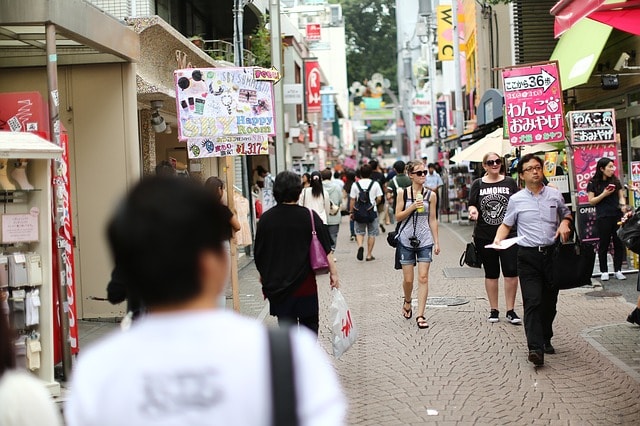
Harajuku is a district in Shibuya, known as the epicenter of Japanese youth culture and fashion.
To see and experience it yourself, walk down the famous Takeshita Street. This pedestrian shopping street is lined with fashion boutiques, shops, and cafes.
Especially on weekends, many of Japanese youth flock to this street wearing their most unique, creative and futuristic outfits.
Location: Harajuku Station, Shibuya-ku, Tōkyō-to
Food:
#9 – Sushi

You haven’t been to Japan, if you haven’t had sushi, right?
You might have had sushi elsewhere before, but in Japan, guaranteed, you will have the best and freshest sushi that you would ever taste.
There are many great places to get sushi in Shibuya. But one of the most affordable places that I highly recommend is Katsu Midori. It is one of the best kaitensuzhi (conveyor-belt sushi) in Tokyo, and the sushi is said to be as fresh as at Tsukiji.
The line is always long, but the turnaround is quite fast. The price starts as cheap as 100 to 500 JPY per plate.
Location: Katsu Midori Seibu Shibuya, Seibu Department Store 8th Floor (building A), 150-0042 Tōkyō-to, Shibuya-ku, Udagawachō, 21
#10 – Takoyaki

Takoyaki, or octopus balls, is one of the best-known street food snacks in Japan.
To sample takoyaki, there is a place called Gindaco Takoyaki, located just outside the exit of Harajuku station. Price is 500 JPY (~$5) for a plate of 6 takoyaki balls.
Location: Gindaco Takoyaki, 150-0001 Tōkyō-to, Shibuya-ku, Jingūmae, 1 Chome−14−24
#11 – Tonkatsu
For the deep-fried food lovers, tonkatsu is one of the best Japanese foods you must try.
Tonkatsu is a deep-fried Panko-breaded pork cutlet, which is quite similar to schnitzel. There are several styles of tonkatsu, but my favorite is the Tonkatsu Cyazuke style.
With Cyazuke style, the crispy tonkatsu is topped with cabbage and served on top of white rice. And as a finishing touch, a hot green tea is poured over it. A bowl of miso soup and Japanese pickles are usually also served on the side.
You can sample the Tonkatsu Cyazuke style at Tonkatsu Maisen Shibuya Hikarie. Price starts around 1,500 JPY (~$14).
Location: Tonkatsu Maisen Shibuya Hikarie, 150-0002 Tōkyō-to, Shibuya-ku, Shibuya, 2 Chome−21
Day 3 – Chuo and Chiyoda
Things to do:
#12 – Tsukiji Fish Market, Chuo
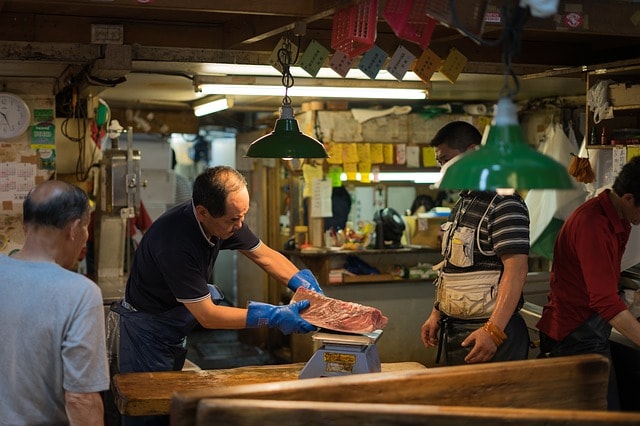
Tsukiji Fish Market is the biggest fish and seafood market in Japan, and even in the world.
If you’re an early bird, you can watch the biggest tuna auction in the world in this market, which starts at 5 AM in the morning.
If getting up early to watch tuna auction is not your thing, you can walk around the market and see the abundance of fresh seafood varieties offered in the market, including sashimi, oysters, etc.
The market gets quite busy around 8 AM, and typically many vendors close already between 10 – 11 AM.
Location: Tsukiji Fish Market, 5 Chome-2-1 Tsukiji, Chūō-ku, Tōkyō-to
#13 – Akihabara
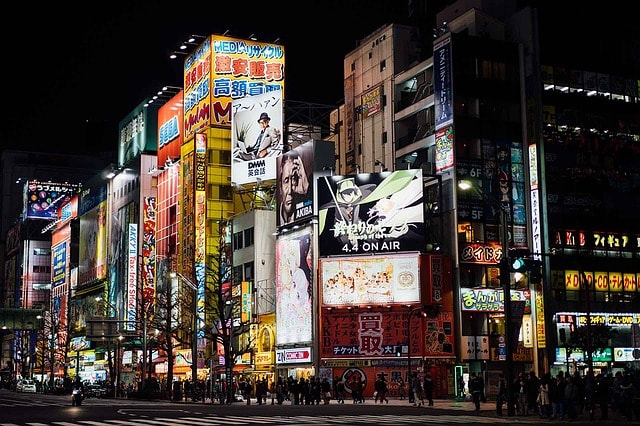
Akihabara is a district in Chiyoda famously known for the epicenter of Japanese anime and gaming culture.
For anime and manga lovers, Akihabara will feel like heaven for you. There are many shops selling anime-related collectibles, games, and electronics.
In addition to that, what also has become popular in Akihabara is the maid café. To avoid any awkwardness though, I should warn you that this is not your typical café.
All waitresses here dress up like a maid or other girly anime characters. They often offer to sing and dance for you, while you’re sipping your favorite beverages.
Location: Akihabara, Taitō-ku, Tōkyō-to
#14 – Tokyo National Museum, Ueno

Tokyo National Museum in Ueno is the oldest and largest Japanese art museum in Japan.
Located in the center of Ueno Park, Tokyo National Museum houses one of the most comprehensive collections from Asia.
One of the most interesting exhibitions in the museum is on the history of Samurai. Alongside many Samurai objects in the display, the museum offers an insightful story about the life of Samurai during one of the fascinating period in Japanese history.
To get to the museum, just simply take JR Yamanote line to Ueno station. Entrance fee to the museum for an adult is 620 JPY (~$6).
Location: Tokyo National Museum, 13-9 Uenokōen, Taitō-ku, Tōkyō-to
#15 – Sensō-ji Temple, Asakusa
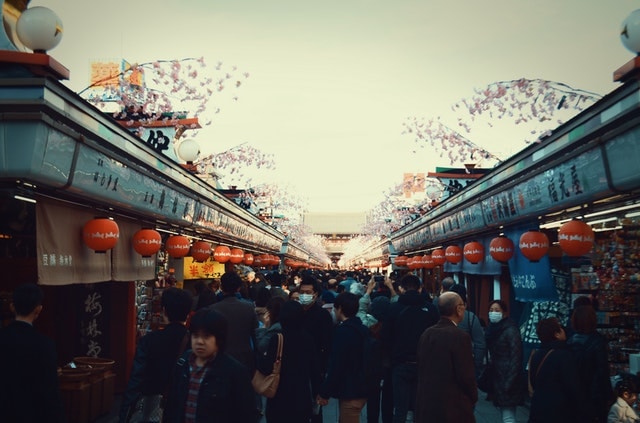
Sensō-ji Temple is the oldest, biggest and the most famous Shinto temple in Tokyo.
The temple is the host of the annual festival, Sanja Matsuri, when many people go to pray at the temple in honor of the spirits of 3 men founding the temple.
During the course of the year, the temple gets visited frequently by the locals, either to pray or even hold a wedding ceremony. This is when you will see many of them dressed beautifully in traditional Japanese kimonos.
In front of the temple, there is a 200-meter long shopping street called Nakamise, where you can get typical Japanese souvenirs and snacks. To get to Sensō-ji, the best way is to take JR Yamanote line to Ueno station, and then change to JR Asakusa or Ginza line to Asakusa station.
Location: Sensō-ji, 2 Chome-3-1 Asakusa, Taitō-ku, Tōkyō-to
Food:
#16 – Sashimi (and other fresh seafood)
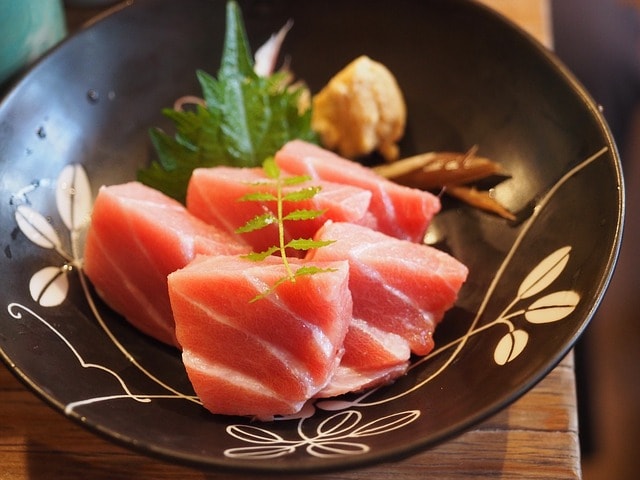
When you visit Tsukiji Fish Market, make sure you sample the freshest sashimi ever, straight out of the Pacific Ocean. There are countless vendors at the market offering fatty salmon, tuna, shrimps, oyster and other seafood.
Or if raw fish is not your thing, you can also find some vendors offering it cooked, steamed or grilled.
Location: Tsukiji Fish Market, 5 Chome-2-1 Tsukiji, Chūō-ku, Tōkyō-to
#17 – Tsukemen Ramen
In the world of Japanese ramen, tsukemen is one of the most precious jewels.
Tsukemen ramen is a dipping-style ramen, where the al-dente cold noodle is served separately from the hot rich, thick broth. Simply dip the noodle into the flavorful broth, and enjoy the explosion of the flavor in your mouth (slurping is a must!).
One of arguably the best tsukemen ramen places in Tokyo is Rokurinsha. It’s located in the basement of Tokyo station, in one of the shopping alley famously called Tokyo Ramen Street. The line is always long here, but the turnaround is quite quick. See Youtube video below, courtesy of Jason Jose, for an impression.
To get to the location is quite tricky because Tokyo station is huge. Just make sure you follow the sign to the Yaesu South Exit. Once you reach the exit gate, you’ll see McDonald’s on your right, and next to it you can find a stairway to go the basement level. You’ll see Rokurinsha immediately right in front of you.
Price is around 1,500 JPY (~$14).
Location: Rokurinsha, Tokyo Station JR Yaesu South Exit, level Basement 1 (Tokyo Ramen Street)
#18 – Okonomiyaki
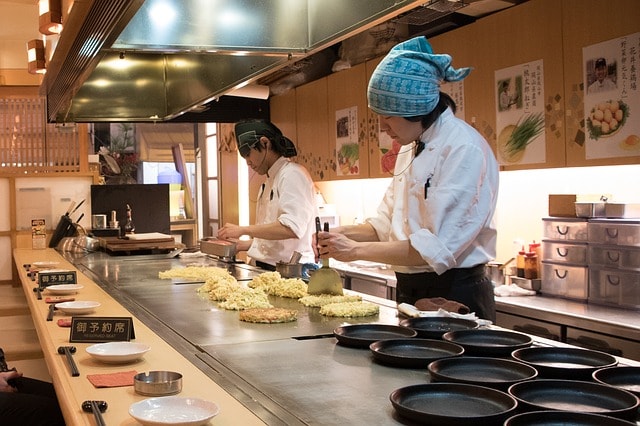
Okonomiyaki is another famous street food snack in Japan. It is Japanese savory omelet/pancake containing varieties of ingredients, like meat, shrimps, octopus, and vegetables.
The great thing about okonomiyaki is that you can freely choose whatever you want to have in it. All the ingredients are then mixed up and grilled on a hot plate. Although okonomiyaki is often seen as a snack, it can be very filling, depending on the number of ingredients you choose.
One of the best places to sample okonomiyaki in Asakusa is at Sometaro. In this place, your okonomiyaki is grilled to perfection on your table. Okonomiyaki is best to enjoy with a cold beer or Japanese Yuzu sour. Price is around 1,500 JPY (~$14).
Location: Sometaro Okonomiyaki, 111-0035 Tōkyō-to, Taitō-ku, Nishiasakusa, 2 Chome−2
Day 4 – Minato
Things to do:
#19 – Oedo-Onsen Monogatari, Odaiba
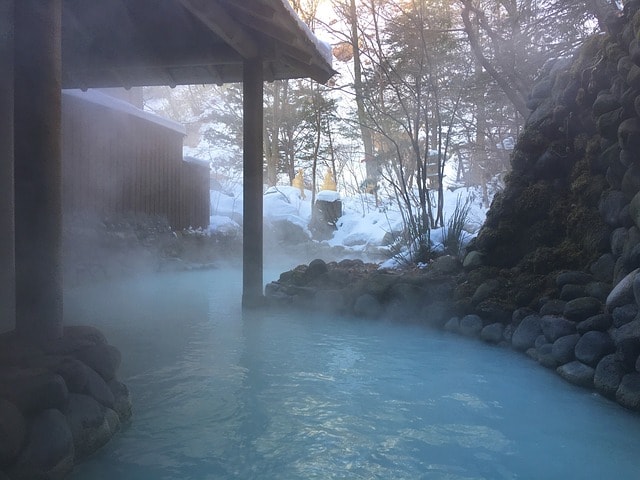
Spend the last day in Tokyo exploring the Tokyo Bay area, on the man-made island called Odaiba. And what can be better on your last day than relaxing at a hot spring?
Oedo-Onsen is a hot spring park with various types of indoor and outdoor baths. You can relax and enjoy its sophisticated decoration theme inspired from the Edo period.
Entrance fee is starting from 2,600 JPY (~$24) for 1 adult.
Location: Oedo-Onsen Monogatari, 135-0064 Tōkyō-to, Kōtō-ku, Aomi, 2 Chome−6
#20 – Rainbow Bridge, Minato
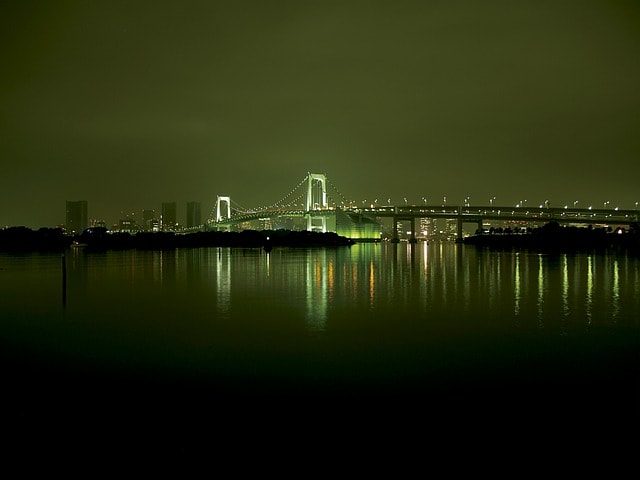
In the evening, get a breathtaking view of Tokyo and Tokyo Bay on this charming Rainbow Bridge. The Rainbow Bridge connects Odaiba to the rest of Tokyo.
At night, the bridge is beautifully lit with rainbow-colored lighting, which makes it a perfect spot to take your Instagram picture!
You can reach Rainbow Bridge by taking the Yurikamome train line and stop at Shibaura-Futo station.
Location: Rainbow Bridge, Minato, Tōkyō-to
Food:
#21 – Udon
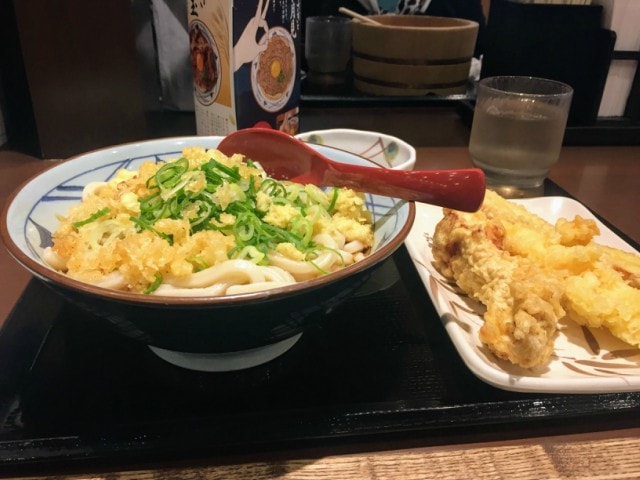
Udon is perhaps not as hyped as its more popular sibling, ramen. But in terms of taste and ability to comfort you, I can guarantee that it is one of the best noodles out there.
Unlike ramen, udon is a thicker type of noodle and usually served only in a mild plain broth, or even without broth. But the best thing about udon is that you can enjoy it with any toppings you want. My favorite is to top it with chopped garlic, ginger, scallions and shrimp tempura.
One of the best places to sample udon in Tokyo is at Marugame Seimen. Price starts at 800 JPY (~$8) for a bowl of udon without any topping.
Location: Marugame Seimen, 2 Chome-3-12 Higashishinagawa, Shinagawa-ku, Tōkyō-to
#22 – Japanese Curry
Perhaps the most misunderstood Japanese dish ever, Japanese curry is very different than the Indian curry most people may think about.
Japanese curry is a whole new thing. It is thicker, sweeter, and darker than the Indian version. And the truth is that it is one of the most popular nation’s comfort foods.
One of the best places to taste Japanese curry is at CoCo Ichibanya. Try the katsu (chicken cutlet) curry, and add the roasted garlic bits. It will definitely blow your mind away! See video below, courtesy of Simon and Martina, one of my favorite foodie Youtubers.
Location: CoCo Ichibanya Minato-ku Mita, 108-0073 Tōkyō-to, Minato-ku, Mita, 3 Chome−4
#23 – Mochi
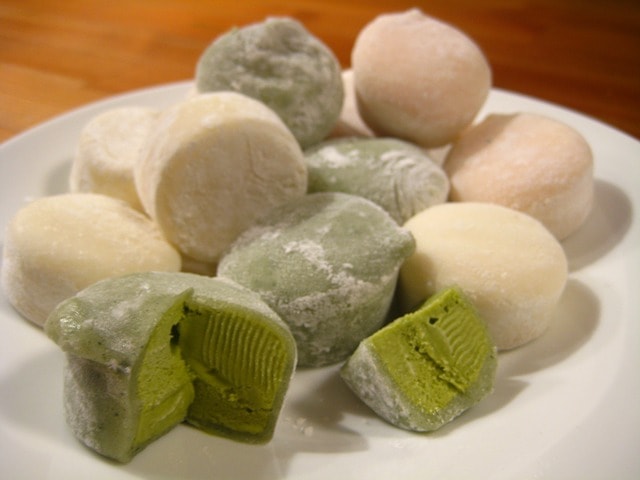
Let’s end our culinary journey in Tokyo with Japan’s most loved sweet treats, mochi. This sweet colorful rice cake comes in many flavors. My favorite is, of course, the matcha flavor.
One of the best places to get mochi in Tokyo is at Shiono. Price is starting at 990 JPY (~$9).
Location: Shiono, 2 chome-13-2 Akasaka Minato-ku, Tokyo
——–
So there you go! I hope you will find this itinerary and guide useful. If you visit Tokyo, I would love to hear your experience and what you think about it. Please do so in the comment below, or send me a message.
Do you like this post and want to receive some more awesome food tips regularly? Please make sure that you subscribe to my email updates. And also check out my other blog posts for many more helpful tips for traveling. See you in the next blog post and until we Greet again!
Get My Quick FREE Travel Checklist!
Subscribe now to get my quick FREE Travel Checklist.
I will also send you latest updates on travel tips, food and other travel stories from around the world!

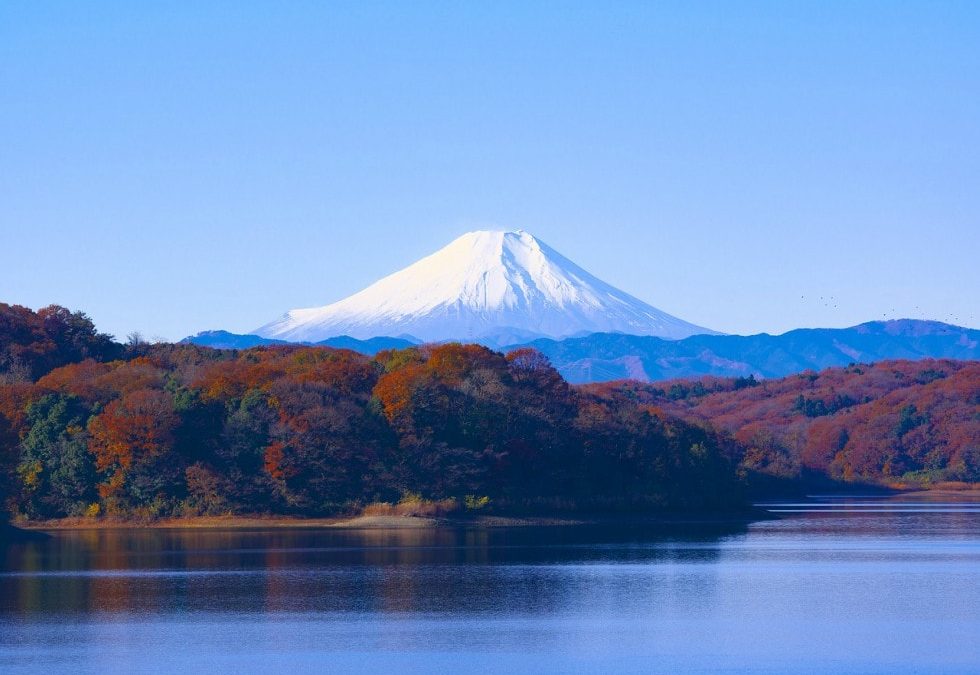
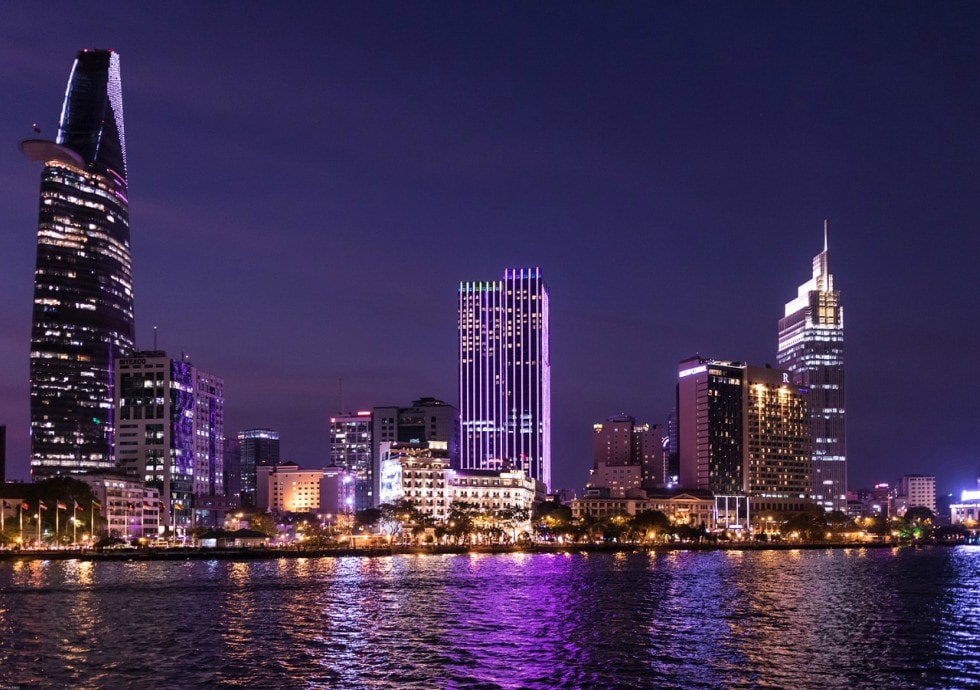

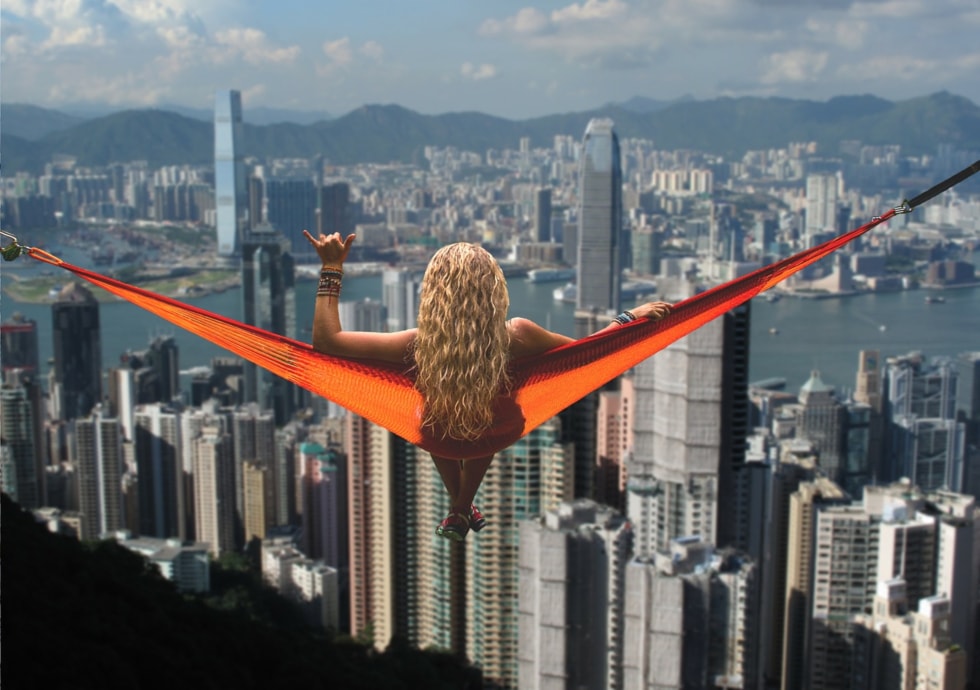
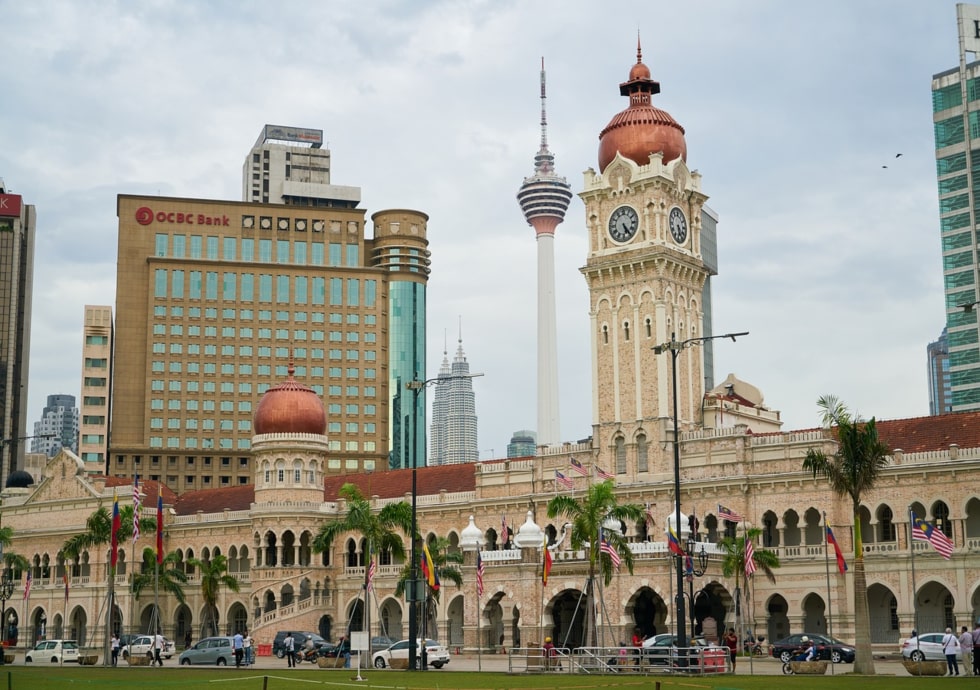
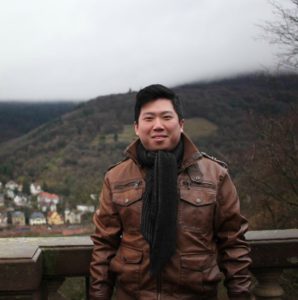




Thanks for all the tips, I’m dying to visit Tokyo and the rest of Japan! I can’t wait to taste all the street food, looks yum!
Thanks for your lovely comment, Rose! Much appreciated! Let me know how Tokyo treats you and what you think about the food recommendation. If you’d like to receive this kind of post regularly, don’t forget to subscribe, so that you won’t miss any update.
P.S. I checked out your blog, and really love it! Do you also live in NL?
This post has me so excited for all the great foods in Tokyo. I can’t wait for my visit!!
Hi Kristin, you should! I hope that you got to try all of the foods.